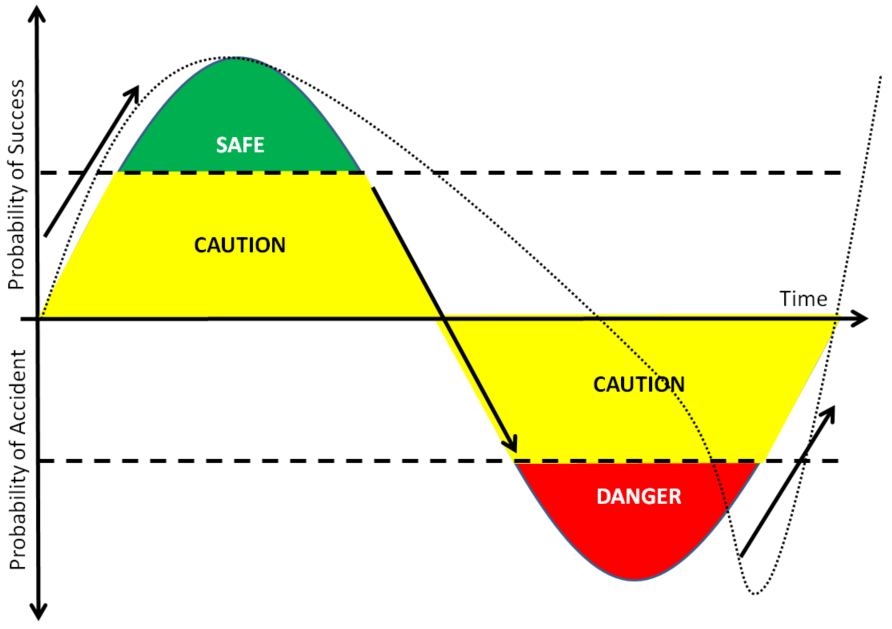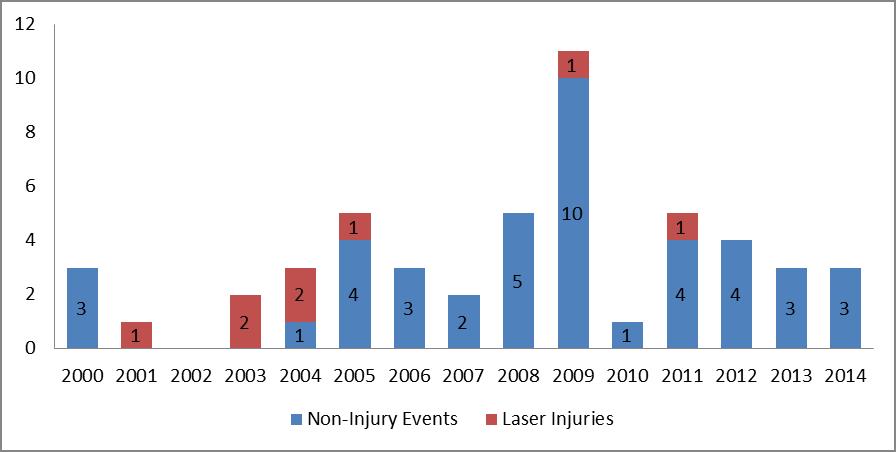By Jamie J. King
Due to a rash of serious laser accidents from 2001 to 2005, including six eye injuries, the Department of Energy (DOE) released a Special Operations Report (SOR) in February of 2005. A root cause analysis revealed that there were four primary causes for the accidents. They were: inadequate training, inadequate Laser Safety Officer (LSO) conduct, need for better internal oversight, and a failure to wear Personal Protective Equipment (PPE).
Insufficient training and an inadequate level of understanding of the hazards and controls were cited in each of the accidents analyzed. This was noted at the worker level, with those who oversee the operations, and supervisors of laser users. As many of the accidents involved students, the inadequacy or lack of training and a safety culture at the university level was mentioned.
The SOR reported that, while technology continues to advance, the LSO program had not kept pace. Most LSOs were part-time and did not hold the primary function or discipline as LSO. Training for LSOs was often generic and could be described as one-time and “one size fits all.” There was no refresher training to help the LSO keep pace with laser technology and changes in regulations. Many were not performing their duties in line with all of the ANSI Z136.1 requirements. Another weakness uncovered was that though the DOE is a singular complex, each laboratory is independently operated with independent laser safety programs. There was no networking between LSOs and all best practices were being rediscovered by each facility’s LSO. Each LSO was basically “reinventing the wheel” when it came to solving complex laser safety issues.
The report cited line management’s oversight of laser operations was a contributing factor and that periodic assessments of lasers, when they did occur, were inadequately documented or lacked sufficient rigor, formality and follow-up. LSO inspections/audits either had not been conducted since the lasers were installed and granted operational status or had been inspected very infrequently.
A failure to wear PPE was cited in each of the seven accidents that occurred. Remembering that PPE is the last line of defense, how could this happen? In every single one of the accidents, the laser beam was either not where it was supposed to, or intended to be. In situations where PPE is not worn, taking a shortcut is often the reason. The excuse given is that the individual thought that they could better “see” the beam without eyewear on. This is especially true with the lasers in the near infrared (750-800 nm).
How does a strong safety program fail? Everything in life works in cycles. Name what you will. Take a look at anything and there are peaks and valleys (like a sine wave). You are left scratching your head wondering how the valleys happened, even with lessons learned.
Speaking from experience, the cycle from the x/y axis origin point (calibration point) to the area where there is a probability of an accident (danger) is typically a four to seven year period. This may be shorter or longer with many variables contributing. The “calibration point” is that point in time where everything is zeroed. This is usually just after a serious accident when management takes action. The typical shape of the curve is not a true sine wave as the slope upward is usually very dramatic and the slope down is gradual until it hits a point, like the edge of a cliff (dotted curve), then rapidly ascends.
The slope upward is usually very steep. Here, management provides the backing and commitment (time and funding). This rise is even more dramatic immediately following an accident where a serious injury occurred. This is because all work has been halted as the investigation is completed. People are “shocked” into reality and the invincibility cloak is pulled away. The thoughts of, “that could have been me” are present in everyone’s minds. At the peak, everyone has bought into the program and safety truly is “first and foremost.”
The decline is something else. Usually you don’t detect it until well into the “caution” area. Many things contribute to this decline: apathy, lack of focus, lack of resources, time, etc. The biggest issue here is that the accident is so distant in the rear-view mirror that people start to forget how easily it can happen and put the invincibility cloak back on. Safety becomes just a buzzword and very few are walking the walk.
The fall depends on two factors: management and the LSO. It is your responsibility, as an LSO, to keep management apprised when you find that the program is on the downward slope. You are the eyes and ears and as such are part of the management team. The goal is to keep your program above the x axis if not totally in the “safe” zone.
Today, work is being performed with laser safety officers from several different DOE labs working on updating a laser safety training course originally developed by Lawrence Livermore National Laboratory in the early 2000s. This course will reflect the new ANSI Z136.1 (2014) revision and will put the labs more in tune with each other. There is also a strong mentoring program being fostered along with collaboration between the DOE laser safety officers and their academic counterparts. This will ensure that students will be instilled with a strong safety ethic.
As far as networking goes, the DOE held an LSO workshop six months after release of the SOR and just celebrated its 10th anniversary this past summer at LLNL. This workshop has become the premier source of all things “practical laser safety” and is attended by DOE, other government agencies, academia and industry.
Upon completion of the fifth annual workshop in 2009, the Laser Safety Subgroup of the Energy Facility Contractors Group (EFCOG) reorganized and elected officers. This group meets quarterly via teleconference with a face-to-face meeting annually at the workshop. Here, a forum is provided for LSOs from the DOE labs to share in networking and a common approach to laser safety.
Finally, in relation to the benefits of networking, a subgroup was assembled to tackle a detailed comparison between the ANSI Z136.1 (2000), (2007) and (2014) standards along with the ANSI Z136.8 (2012). This was meant to provide the facts necessary for each lab to adopt the latest regulatory standard at their facility.
So where are we? When you take into consideration the several thousand lasers that are in use across the DOE Complex with approximately 4,000-5,000 of them being Class 3B and Class 4, it brings things into perspective. The use of high powered lasers within the DOE is being performed in quite a safe manner. What should be taken from this and the cycle of accidents, is that we must remain forever vigilant. As an LSO, it is your responsibility to keep safety first and foremost in the minds of your laser workers. As shown from the lessons learned in tracking DOE laser related occurrences over the years, accidents don’t “just” happen. Safety is a team effort and all must participate for it to work!
Jamie J. King is a CLSO at Lawrence Livermore National Laboratory







